‘Fourteen Vegetable Greens’ / ‘Choddoshak’ / চোদ্দো শাক।
Note: Each member belonging to ‘Choddoshak’ family has been already discussed separately and individually in previous sections of this blog including their major phyto-chemical contents, liable for inducing versatile physiological and pharmacological effects. The members are shown below.
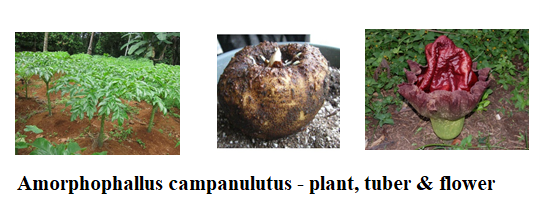
ওল।
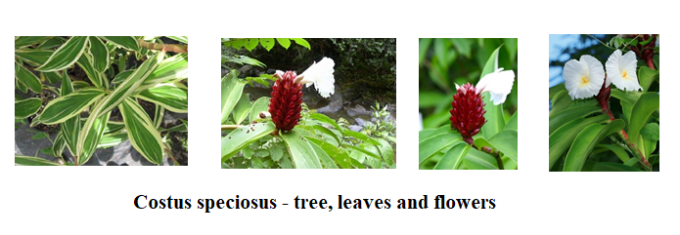
কেঁউ / কেতকী
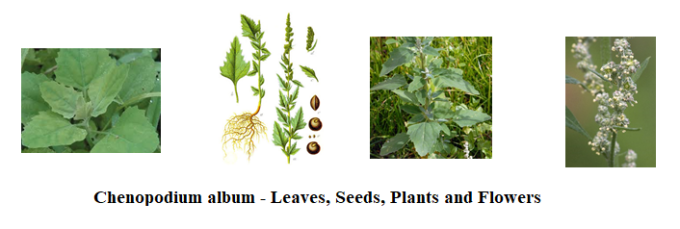
বেতো।

কালকাসুন্দে।

Azadirachta indica
নিম।
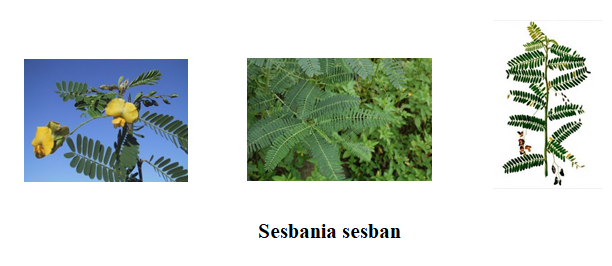
জয়ন্তী।
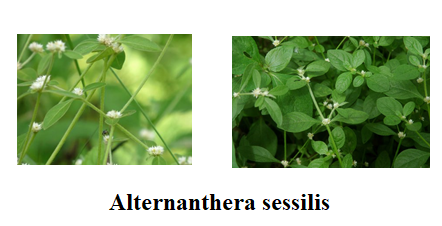
শালিঞ্চে।
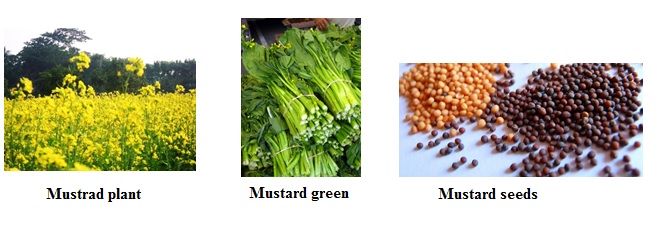
Brassica campestris
সরিষা।
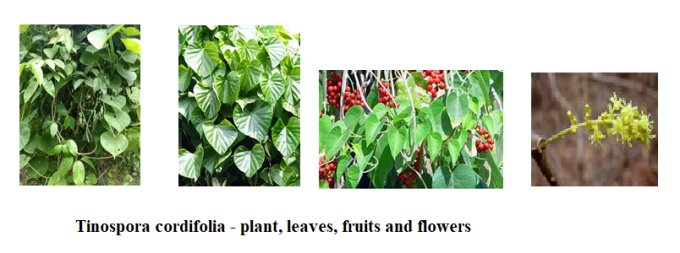
গুড়ুচি।

পটল / পলতা।
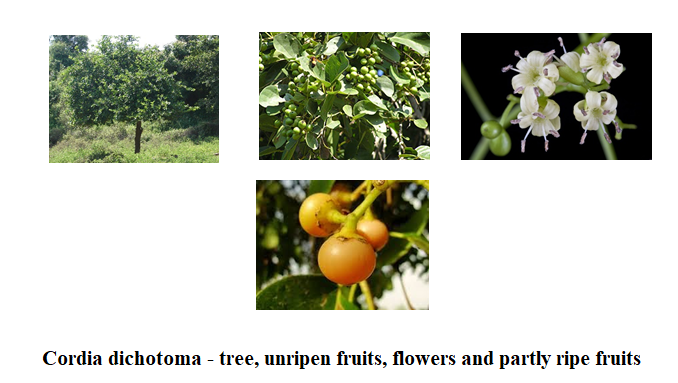
শেলুকা।
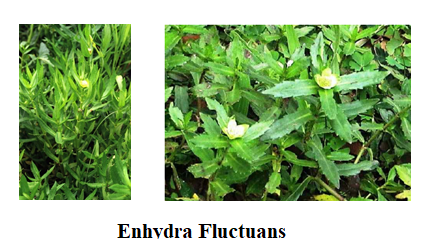
হিলমেচিকা।
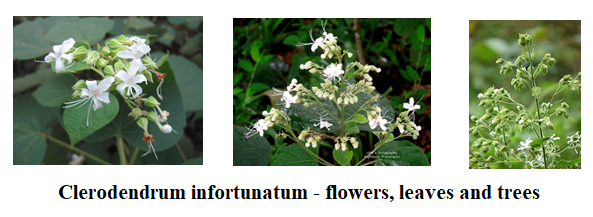
ঘেঁটু।
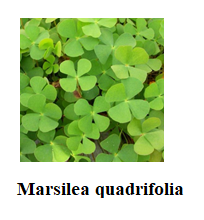
শুষনী।
Members of ‘Choddoshak’: The members of ‘Fourteen vegetable greens’ / ‘Choddoshak’ and their names are provided below. Uniquely, each one of them originates from the different family which is shown along with Indian names in Bengali script. The authentic names of ‘Choddoshak’ have been collected from the renowned folk medicinal book, “Chironjib Bonousodhi” written by the most celebrated Indian apothecary, botanist and scientist Mr Shibkali Bhattacharya of Calcutta.
1) Amorphophallus campanulatus (O`l, ওল – Araceae family).
2) Costus speciosus (Keu, কেঁউ – Costaceae family).
3) Chenopodium album (Betho, বেতো – Chenopodiaceae family).
4) Cassia sophera (Kolkasundi, কালকাসুন্দে – Caesalpiniaceae family)
5) Azadirachta Indica (Neem, নিম – Meliaceae family)
6) Sesbania sesban (Jayanti, জয়ন্তী – Fabaceae family)
7) Alternanthera sessilis (Shalinche, শালিঞ্চে – Amaranthaceae family)
8) Brassica campestris (Sorisha, সরিষা – Cruceferae – family)
9) Tinospora cordifolia (Guduchi, গুড়ুচি – Menispermaceae family)
10) Tricosanthes dioica (Patol pata, পটল পাতা – Cucurbitacea family)
11) Cordia dichotoma (Sheluka, শেলুকা – Boraginaceae family)
12) Enhydra fluctuans (Hilmechika, হিলমেচিকা – Asteracea family)
13) Clerodendrum infortunatum (Ghentu / Vontaki, ঘেঁটু – Verbenaceae family)
14) Marsilea quadrifolia (Shusni, শুষনী – Marsilacea family)
Historical and ethnological aspects: As per Indian tradition, it is customary to consume fourteen vegetable greens / ‘Choddoshak’ all at a time after frying in oil on the day before Diwali / Lighting festival. The ancient myth advocates the practice believing to keep away the demons attacking humans. Judging rationally and from logical perspectives, the demons presumably allude to various ailments intruding normal health which is somewhat noticeable during the seasonal changes of autumn. The tradition to consume ‘Choddoshak’ is running very deep, from the very ancient past. It is a ritual followed by the Hindus in India. In Indian language, the word ‘Choddo’ means fourteen whereas ‘Shak’ refers to leafy vegetables. Diwali / Lighting festival is celebrated by the Hindus all over India and considered being the largest in the nation. The date or timing falls in the autumn period. Consuming ‘Choddoshak’ before the day of Diwali is by far a strict ritualistic norm to any north Indian Hindus. The reason remains still undetermined. According to the myth, it is a belief that consuming the entire collection would take away the future chance of any attacks from the diseases during seasonal changes of autumn. The varying opinion of scholars further indicates that consuming ‘Choddoshak’ is actually mandated throughout the autumnal period or even further, not just a day before Diwali. Certainly, it provides synergistic biochemical actions to maintain a healthy body. Although a conjecture, but it is somehow viewed that intake of ‘Choddoshak’ at this time of the year helps alleviate several common seasonal diseases or disorders. Additionally, it is a millennia old practice which was once prescribed by the then ancient Indian apothecaries. The great epochal Hindu medicinal encyclopedia “Charaka Samhita” commands to consume those edible greens at autumn to keep away “Yama” the God of death. In later period, Hindu scholars clarified the real meaning of it while pointing to the fact that in tropical India, in post monsoon season and at the starting of winter most inhabitants of the subcontinent become prone to the attack of seasonal ailments. So, consuming those leafy greens would help holding strength and removing away any of the harmful possibilities concerning health. It could be perhaps a reason why the practice has been advised to continue until the next monsoon. Uniquely, the monsoon period has been intentionally deducted from round the year loop. The logic suggests that collection of clean herbs during the monsoon season obviously would face enormous difficulties since majority of the members of ‘Choddoshak’ family are grown in the low-lying areas therefore being possibly submerged under the muddy water. So there is really chance of infestation by insects and parasites as well. It is a good reason why the bundle of ‘Choddoshak’ is introduced at an auspicious moment, the day before annual Diwali festival; the biggest celebration arrives at the end of monsoon season. In everyday life finding those invaluable herbal components is a real challenging task. Thus, in order to keep the ritualistic norm allied with quasi religiousness also combined with the ancient myth, ‘Choddoshak’ is consumed at the providential moment, prior to Diwali day.
Ethnopharmacology: At the onset of autumn in India during the month of October and November, the climate experiences sharp changes concerning temperature and humidity of the atmosphere. This climatic variation often brings numerous maladies even to a healthy human. Those ailments usually include upper respiratory tract infection, gastrointestinal problems, skin rashes, viral fever and some others.
Seasonal upper respiratory tract infection, rhinitis, allergies, cold and fever – It is believed to be a possibility that among the bundle of ‘Choddoshak’ at least three of them, Cassia sophera, Sesbania sesban and Clerodendrum infortunatum could be useful to treat those seasonal problems like bronchitis, asthma, allergy and fever due to the nature of their chemical contents.
Seasonal gastrointestinal problems – A few of the members belonging to ‘Choddoshak’ family have beneficial role to prevent or alleviate the different kind of gastrointestinal problems. Chenopodium album plays strong hepatoprotective role. The seeds and leaves of Brassica campestris / mustard (সরিষা) help maintain normal bowl movement. It also has the potent antidiuretic property. Similar way leaves of Enhydra fluctuans (হিলমেচিকা) are useful to protect from any sudden liver disorders. The other member is the leaves and fruits of Tricosanthes dioica. Its widely popular fruit, named as Patol or pointed gourd (পটোল) is also beneficial for the health. Another interesting one is either the leaves or tuber of Amorphophallus campanulatus (Elephant foot yam) which is known as O`l (ওলশাক, ওল) in Bengali that provides large help to the hemorrhoid sufferers wing to its high fiber content. In Sanskrit it is therefore called Arsogna meaning the destroyer of Arsa, hemorrhoid.
Seasonal depression disorder: Those symptoms usually occur due to the seasonal changes of weather creating sudden dryness or less humidity. The condition brings mood swings and behavioral changes including abnormal food intake, either high or low, also often accompanied with insomnia and lethargy. There is even occasional involvement of headache and dizziness. The herb, Alternanthera sessilis (শালিঞ্চে) can provide relief from the dizziness and headache. Additionally, Marsilea quadrifolia (শুষনী) and Enhydra fluctuans (হিলমেচিকা) are very helpful while acting as nerve tonic and removing away the insomnia and any mild nervous disorders.
Seasonal infection and skin rash: Enhydra fluctuans ((হিলমেচিকা) is frequently used as folk medicine to reduce inflammation and infection of skin. Among all the members, the most widely famed anti-infection species is Azadirachta indica / Neem (নিম) which known for its tremendous beneficial role on skin allergy, antifungal or antibacterial and antiviral effects. On the other hand Chenopodium album (ঘেঁটু) offers antiseptic effect and additionally Tinospora cordifolia (গুড়ুচি) acts as powerful immune modulator helping boost the overall immune system.
Pharmacological effects: It is certain that each members of ‘Choddoshak’ family enable to exert versatile physiological and pharmacological effects owing to their large reserve of biochemical contents which are immensely diverse by the nature. Below are the few activities which are often noticeable due to their pharmacological effects.
Antihistaminic, analgesic and antiinflammatory effect – It is noticed that individual leaf-extract of some of the members is potent to exert those beneficial actions when tested by using the laboratory animal models. The existence of huge stockpile of antioxidants in most of them could be one of the reasons in this regard. The inhibitory actions of flavonoids on pain perception are well documented. Essentially, the symptom occurs owing to the generation of inflammatory mediators. In addition, some flavonoids are capable to enhance Serotonin (5-HT) level within the CNS that in turn interacts with the receptors like 5-HT2A and 5-HT3 exerting central analgesia. In a similar manner, the antiinflammatory effect arises due to the prevention or lowering of PGE2, Leukotrienes, Substance P, Bradykinin, histamine and serotonin productions. Those mediators are also largely responsible for the asthma attack. In general, blocking those mediators provide large beneficial effects. In that regard, components like Piperidine alkaloids and particularly the flavonoid, Rhamnetin and various phyto-steroids enact strong antihistamine behavior including the broncho-dilatory effect.
Antimicrobial and anthelmintic effect – Actually, majority of the members of ‘Choddoshak’ family have the antimicrobial and antibacterial activities to a certain extent. Those synthesize alkaloids and anthraquinone compounds like Cassia sophera, Tinospora cordifolia, Costus speciosus, Chenopodium album, and Chordia dichotoma could be more potent. In addition several steroids and triterpenes are identified to be highly efficient. Many of them also have herbicidal, antifungal and antiprotozoal actions. The anthelmintic action is more pronounced in the case of Costus speciosus and Enhydra fluctuans. The later possesses a bioactive alkaloid Albendazole which works by binding to the Colchicine site of β – tubulin thus inhibiting the formation of spindle fiber essential for cell division thus causing dysfunction of the parasites.
Hepatoprotective effect – A large majority of the members offer strong hepatoprotective actions when conducted on experimental animals suffering from either by liver injury or treatment with CCl4 which are also verified histo-pathologically. The administration of leaf extract brings back AST, ALT and ALP and bilirubin to the normal level. The identifiable components are abundant level of flavonoids, phyto-sterols, terpenes along with the others displaying the effective role.
Psycho-pharmacogical, anticonvulsant and anxiolytic effect – Studies indicate that Marsilea quadrifolia has stronger effects regarding psychopharmacological activities on behavioral aspects particularly in the case of exploratory performances. The herb also acts as a muscle relaxant and sedative. Additionally, it enables to enhance the phenobarbitone induced sleeping time. The presence of Marseligenin, a pentacyclic triterpene is thought to be the underlying cause that interacts with the Serotonin, 5-HT2A and Benzodiazepene receptors displaying the effects. Regarding the cognitive function and learning behavior, it has been noticed that it provides beneficial effect to the learning problem sufferers and memory disordered persons. The particular cause is due to the enhancement of Acetylcholine level within frontal cortex via the inhibition of Acetylcholine esterase. The inhibition of acetylcholine esterase and subsequent elevation of Acetylcholine level within the hippocampus also helps recover from amnesia which is verified by the laboratory experiments on amnesic animals induced either by using scopolamine or electroconvulsive shock. The effective compound identified is Marsiline. Further the herb Enhydra fluctuans reduces the CNS depression also providing neural protections.
Immuno-modulatory effect – The prominent immunomodulatory role within the members of ‘Choddoshak’ family is displayed by Tinospora cordifolia (TC) and Chenopodium album. But TC also shows some cytotoxic actions. The identifiable compounds are: Syringin, Magnoflorine, N-methyl pyrrolidone, N-formyl annonain, Cordiofoliside A and Tinocordiside. Further TC displays osteoblast production thus relieving arthritis problems. It also enhances humoral immune response.